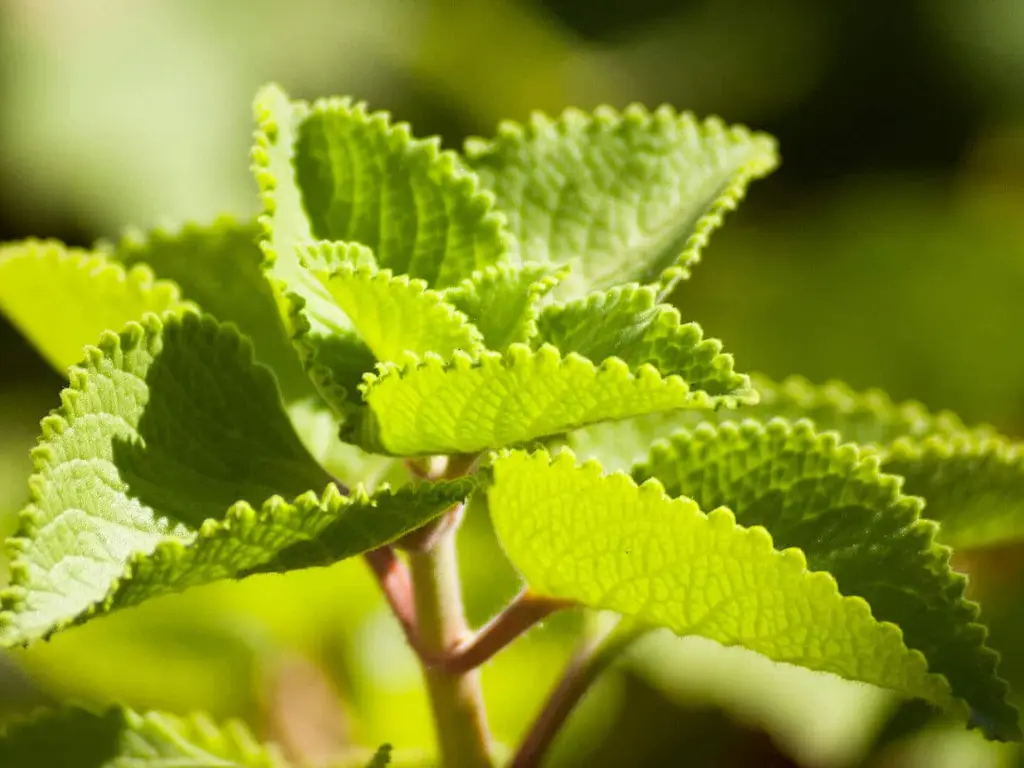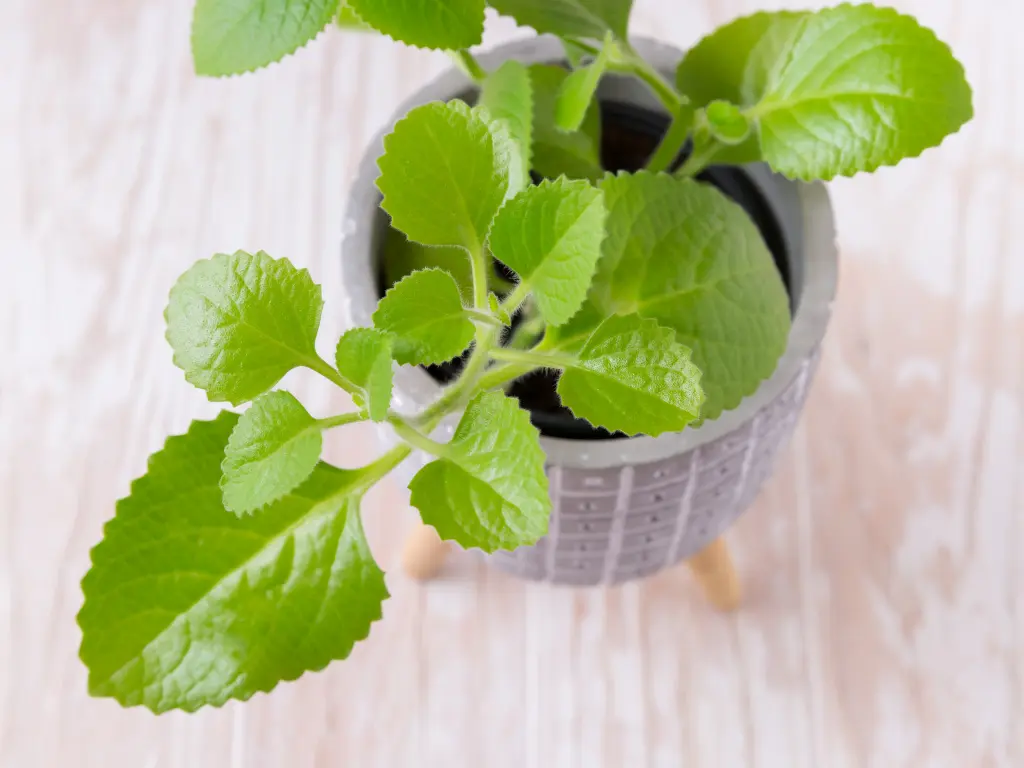Cuban Oregano is a versatile and hardy herb that can add a touch of flavor to your garden or kitchen. Known for its aromatic leaves and easy-to-grow nature, this plant is a favorite for gardeners who love fresh, fragrant herbs. Whether you’re a seasoned gardener or a beginner, caring for Cuban Oregano is simple and rewarding. In this guide, we’ll cover everything you need to know about growing Cuban Oregano.
What Is Cuban Oregano?

Cuban Oregano (Plectranthus amboinicus), also known as Mexican mint, Spanish thyme, and Indian borage, is a perennial herb in tropical regions but is most commonly grown as an annual. With its soft, velvety leaves edged in white and a strong, aromatic scent, Cuban Oregano grows quickly, creating a lush display that’s especially beautiful in container gardens. In tropical areas, it blooms from late winter to mid-spring, but if grown as an annual, you won’t see the trumpet-shaped flowers in shades of pink, white, and lavender.
Cuban Oregano has a strong menthol or camphor-like fragrance that intensifies when the leaves are crushed. It’s a potent seasoning that should be used sparingly in cooking.
While Cuban Oregano is safe for human consumption, it is toxic to dogs, cats, and horses, so it’s important to keep it away from pets.
Benefits of Growing Cuban Oregano
Cuban Oregano offers a variety of benefits that make it a great choice for gardeners and home cooks alike:
Culinary Uses
Cuban Oregano’s strong, earthy flavor makes it a great addition to many dishes. It pairs well with meats, stews, soups, and sauces, particularly in Mediterranean, Caribbean, and Latin American cuisines. The leaves can be used fresh or dried, and they can also be turned into flavorful oils and vinegars.
Medicinal Benefits
Beyond the kitchen, Cuban Oregano plant has been traditionally used for its medicinal properties. It’s known to have antibacterial, antifungal, and anti-inflammatory effects. Some people use Cuban Oregano to help alleviate symptoms of respiratory issues, digestive discomfort, and even skin irritations.
Ideal Growing Conditions for Cuban Oregano

Here’s what you need to know:
Sunlight Requirements
Cuban Oregano loves the sun. It requires at least 6 hours of direct sunlight each day to thrive. If you’re growing it indoors, place it near a sunny windowsill where it can get plenty of light. Outdoors, choose a sunny spot in your garden where the plant can bask in the warmth.
Temperature and Hardiness Zones
Cuban Oregano is best suited for USDA Hardiness Zones 9-11, which means it thrives in warm temperatures ranging from 50°F to 95°F (10°C to 35°C). If you live in a cooler climate, you can still grow Cuban Oregano indoors or as an annual during the warmer months. Just be mindful of frost, as the plant is sensitive to freezing temperatures.
Soil Preferences
Like most herbs, Cuban Oregano prefers well-draining soil. A sandy, loamy soil mixture with good drainage works best. Make sure to plant the Cuban Oregano plant it in a pot or garden bed with sufficient drainage to prevent water from accumulating around the roots, which could lead to root rot.
Read more: How to Grow Oregano Indoors Easily (Beginner’s Guide)
Care Tips for Cuban Oregano
Watering
Cuban Oregano is a hardy plant that can tolerate some drought, but it still needs the right amount of water to thrive. During the growing season in spring and summer, water your Cuban Oregano once a week or whenever the soil feels dry to the touch. This ensures it gets the hydration it needs without becoming waterlogged.
In cooler months, you can reduce watering, allowing the soil to dry out between waterings. Cuban Oregano does not like soggy soil, so be careful not to overwater. Check the soil regularly and avoid letting it stay wet for long periods.
If the plant is overwatered, you might notice yellowing leaves, wilting despite moist soil, or soft, mushy stems. If this happens, reduce watering and let the soil dry out before watering again.
On the other hand, if the leaves are dry, crispy, or curled, your plant is likely underwatered. In this case, water it more deeply, making sure the soil is evenly moist but not soggy.
Fertilizing
Cuban Oregano doesn’t require frequent fertilizing, but it can benefit from occasional feedings during the growing season. A balanced, water-soluble fertilizer once a month in spring and summer will help it grow stronger and more vibrant.
Be cautious not to over-fertilize, as too much fertilizer can lead to excessive growth, making the plant leggy and reducing the flavor of the leaves. When fall and winter arrive and the plant’s growth slows down, reduce or stop fertilizing to match the plant’s slower pace.
Pruning
Pruning Cuban Oregano is simple and can help the plant maintain a tidy shape while encouraging healthy growth. Start by trimming any dead or damaged leaves, which will keep the plant looking its best. Regularly pinch back the tips of the stems to promote a fuller, bushier growth and prevent the plant from becoming too leggy.
As Cuban Oregano can grow quite large, it’s a good idea to prune it periodically to keep its size manageable and compact. This will help the plant stay healthy and prevent it from outgrowing its space.
Pest Control for Cuban Oregano
While Cuban Oregano is generally resistant to pests, occasional pests like aphids or spider mites may appear. It’s important to check your plant regularly for any signs of pests. If you notice any, treat the affected areas with insecticidal soap or wipe the leaves gently with a damp cloth to remove them.
Acting early helps prevent an infestation and keeps your plant healthy.
Seasonal Care Tips for Cuban Oregano
Caring for Cuban Oregano changes as the seasons shift. During the spring and summer, when the Cuban Oregano plant is actively growing, provide plenty of sunlight, water regularly, and fertilize once a month. These conditions will keep your Cuban Oregano vibrant and strong.
In the fall and winter, as growth slows down, reduce watering and stop fertilizing. If your plant is outdoors and you live in a cooler climate, make sure to protect it from frost or bring it indoors when temperatures drop. By adjusting care according to the season, you can help your Cuban Oregano thrive year-round.
Common Problems and How to Fix Them
Although Cuban Oregano is a resilient plant, it can face a few challenges. Here are some common issues and how to address them:
-
Yellowing Leaves: This is often a sign of overwatering. Check the soil for proper drainage and reduce watering if necessary.
-
Pests and Diseases: Cuban Oregano is relatively pest-resistant, but it can occasionally attract aphids or spider mites. If you notice pests, treat your plant with insecticidal soap or wipe the leaves gently with a damp cloth.
-
Root Rot: Caused by waterlogged soil, root rot can be prevented by ensuring the plant is grown in well-draining soil and by not overwatering.
Propagating Cuban Oregano

Cuban Oregano plant is easy to propagate through stem cuttings, making it a great Cuban Oregano plant to share with friends or expand your collection.
-
Take a 4- to 6-inch cutting from a healthy stem, making sure to include a few leaves.
-
Let the cut end callus for a few days before planting it in well-draining soil.
-
Keep the soil lightly moist and place the cutting in a bright, warm location. In a few weeks, the cutting will develop roots, and you can transplant it into a larger pot or garden bed.
Frequently Asked Questions (FAQs)
-
Can Cuban Oregano be grown indoors?
Yes, Cuban Oregano can thrive indoors if placed in a sunny spot with plenty of light. A south-facing window is ideal. -
How often should I water Cuban Oregano?
Water once a week during the growing season, and reduce watering to once every two weeks in the winter. Always check the soil before watering. -
What type of soil is best for Cuban Oregano?
Cuban Oregano prefers well-draining, loamy or sandy soil. Avoid soil that retains too much moisture. -
Is Cuban Oregano safe for pets?
Cuban Oregano is non-toxic to pets, but it’s always best to keep it out of reach to prevent any accidental nibbling.
Conclusion
Caring for Cuban Oregano is straightforward, and with just a little attention, you can enjoy its fragrant leaves in your garden or kitchen year-round. Whether you’re using it for cooking or its medicinal benefits, this hardy herb is a great addition to any home. So, give your Cuban Oregano a sunny spot, some well-draining soil, and a bit of love, and watch it flourish!
Happy gardening, and don’t forget to enjoy the fresh flavors and fragrances that Cuban Oregano brings into your life!
You may like:
